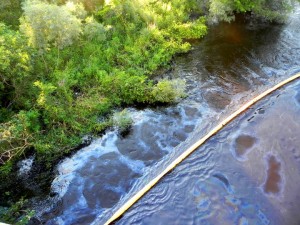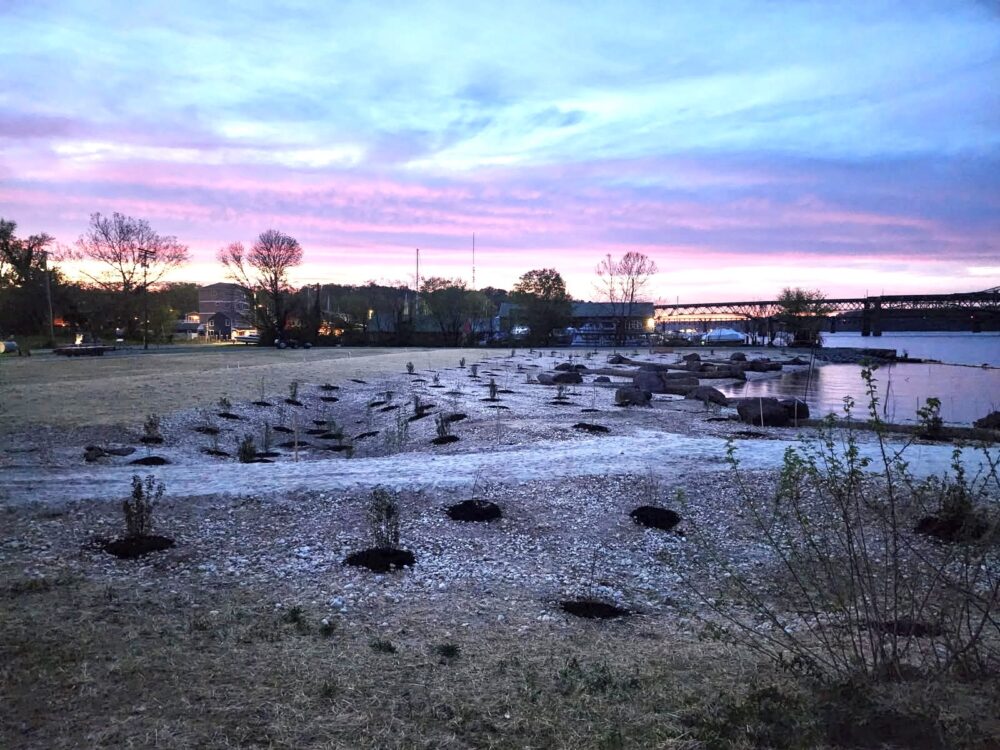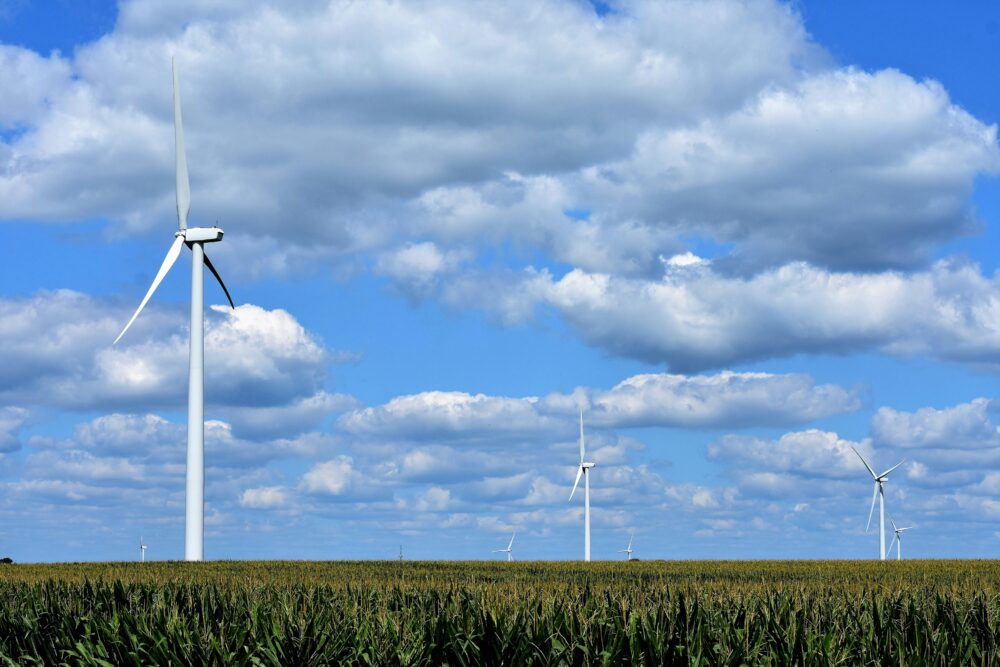We have much more to do and your continued support is needed now more than ever.
10 Reasons Congress Should Not Rush Proposed Keystone XL Tar Sands Pipeline

While the Yellowstone River is still being cleaned after a 42,000 gallon ExxonMobil pipeline spill earlier this month and on the year anniversary of a 840,000 gallon Enbridge pipeline spill into the Kalamazoo River, which is still closed due to the contamination, the House of Representatives will vote to expedite the next oil disaster.
Introduced by Rep. Lee Terry (R-NE), H.R. 1938 directs the President to expedite the permitting and make a final decision by this November on TransCanada’s proposed Keystone XL tar sands pipeline. This pipeline is a bad bet for America for a lot of reasons, including the fact that TransCanada actually told the Canadian government it would increase our nation’s fuel bill by $4 billion per year. But we need look no further than the clockwork contamination of America’s lands and waters by tar sands pipelines to see that rushing this pipeline is irresponsible.
Here are 10 reasons why – based on safety – Congress should not rush Keystone XL:
- TransCanada’s brand new Keystone tar sands pipeline has spilled 12 times in 12 months.
- The toxic chemicals that will flow through Keystone XL haven’t been disclosed to emergency first responders.
- Keystone XL’s spill frequency and worst-case scenario spill have been seriously underestimated.
- TransCanada is strong-arming American farmers opposed to Keystone XL’s route through the Ogallala Aquifer.
- Existing pipeline safety standards are failing to protect public health and the environment.
- Regulators have said that tar sands may cause more “wear and tear” on pipelines.
- Tar sands were implicated in all the worst pipeline spills in the U.S. and Canada over the last year.
- Pending legislation in the House and Senate acknowledge that tar sands pipelines may be risky.
- Michigan’s Kalamazoo River is still contaminated from a tar sands pipeline spill a year ago.
- Keystone XL’s environmental review has taken so long because it’s been flawed by bias.
Congressional testimony of Randy Thompson, Nebraskan farmer and rancher:
“TransCanada’s Keystone Pipeline, which crosses the eastern part of our state, has been in operation for less than a year and has already had twelve confirmed leaks. The latest of which spewed a geyser of chemical laden tar sands sixty feet into the air. In only a few minutes, it discharged nearly twenty thousand gallons into the surrounding area. How can we have confidence that this won’t happen on our property?”
1. TransCanada’s brand new Keystone tar sands pipeline has spilled 12 times in 12 months.
Keystone is the newest pipeline on record to have been deemed a threat to life, property and the environment by regulators. After a 16,800 gallon spill on May 7 in North Dakota followed by another spill on May 29 in Kansas, the Pipeline and Hazardous Materials Safety Administration issued TransCanada a corrective action order, temporarily shutting down the pipeline. This order is still in effect and TransCanada is still complying with its requirements.
2. The toxic chemicals that will flow through Keystone XL haven’t been disclosed to emergency first responders.
Tar sands crude is thicker, more corrosive, and more abrasive than conventional crude, so it has to be mixed with chemical diluents, then pumped at high pressures and temperatures to make it flow through a pipeline. The State Department’s environmental review of Keystone XL hasn’t analyzed what’s in these mixtures, claiming it’s “proprietary information.” The Environmental Protection Agency critiqued this, saying that such analysis is “important to establish the potential health and environmental impacts of any spilled oil, and responder/worker safety, and to develop response strategies.” The Yellowstone and Kalamazoo River spills demonstrate why this is important. In both cases, confusion ensued about how to respond because no one knew what chemicals were spilled.
3. Keystone XL spill frequency and worst-case scenario spill have been seriously underestimated.
This is according to an independent analysis by Dr. John Stansbury, a professor of water resources engineering at the University of Nebraska-Lincoln. He estimated that Keystone XL would have 91 spills of more than 50 barrels over 50 years. TransCanada estimated it would have 11. Stansbury also estimated that the worst-case spill into the Missouri, Yellowstone and Platte Rivers would be 122,867 , 165,416 , and 140,950 barrels, respectively, resulting in oil plumes extending for hundreds of miles. The worst-case spill for a subsurface release to groundwater in the Sandhills region of Nebraska would be 189,000 barrels.
4. TransCanada is strong-arming American farmers opposed to Keystone XL’s route through the Ogallala Aquifer.
TransCanada is threatening American farmers with eminent domain even after Sen. Mike Johanns (R-NE) asked them not to. Farmers are concerned about the proposed route for Keystone XL, which passes right through the Nebraska Sandhills where the sandy soils are saturated by the Ogallala Aquifer at or near the surface level. So the pipeline would have to be laid directly into the aquifer, which provides irrigation water for much of America’s breadbasket and drinking water for millions of people. Two hydrologists from the University of Nebraska-Lincoln have made the case that their state’s fragile Sandhills is particularly vulnerable to a pipeline spill.
5. Existing pipeline safety standards are failing to protect public health and the environment.
National Wildlife Federation’s 2010 report, “Assault on America: A Decade of Petroleum Company Disaster, Pollution, and Profit,” documents that oil disasters are tragically all too common. From 2000 to 2009, pipeline accidents accounted for 161 fatalities and 576 injuries in the United States. Since 2009, pipeline accidents haven’t fared better. According to data from the Pipeline and Hazardous Materials Safety Administration, since January 2010, pipelines have spilled more than 2.3 million gallons of oil and caused $46 million dollars in damage to private property and the environment. The ExxonMobil pipeline spill into the Yellowstone River exemplifies this. Although a recent inspection by regulators revealed anomolies in the pipeline, it was allowed to continue operation, leading to the spill.
Senator Max Baucus of Montana addressed Ms. Cynthia Quarterman, Administrator of the Pipeline and Hazardous Materials Safety Administration, during a hearing on the Yellowstone River spill: “To be honest, ma’am, it sounds like you’re not really on top of this.”
6. Regulators have said that tar sands may cause more “wear and tear” on pipelines.
About two weeks after the Yellowstone River spill, it came to light that ExxonMobil’s pipeline routinely carried tar sands crude. This surprised Montana Governor Brian Schweitzer and Montana Department of Environmental Quality officials. In response to this development, a representative of the Pipeline and Hazardous Materials Safety Administration said, “Tar sands crude may also cause more wear and tear on pipes because of its chemical makeup, including corrosive and abrasive agents…Federal inspectors were trying to determine if transport of tar sands crude could have triggered internal corrosion that may have played a role in the rupture.”
7. Tar sands were implicated in all the worst pipeline spills in the U.S. and Canada over the last year.
Last year, an Enbridge pipeline spilled 840,000 gallons of tar sands crude into the Kalamazoo River. In April of this year, the Rainbow pipeline in Canada ruptured and spilled over a million gallons of crude – the largest spill in Canada in 36 years. The Rainbow pipeline carries tar sands crude. The ExxonMobil pipeline that spilled 42,000 gallons into the Yellowstone River carries tar sands crude. TransCanada’s Keystone pipeline that leaked 12 times in a year carries tar sands crude. Is this merely coincidence? Probably not. If tar sands crude causes more wear and tear on pipelines, more spills would be expected.
8. Pending legislation in the House and Senate acknowledge that tar sands pipelines may be risky.
In May, the Senate Commerce, Science, and Transportation Committee passed the Pipeline Transportation Safety Improvement Act of 2011 (S. 275) that, among other things, calls on the Pipeline and Hazardous Materials Safety Administration to conduct a tar sands pipeline safety study. The House Energy and Commerce Committee is now considering draft pipeline safety legislation that also calls for a tar sands pipeline safety study. While this is a step in the right direction, the study should be done before any more tar sands pipelines are built.
9. Michigan’s Kalamazoo River is still contaminated from a tar sands pipeline spill a year ago.
Not only does tar sands crude cause more wear and tear on pipelines than conventional oil, it’s also much harder to clean up when it spills. Unlike conventional crude oil, which floats on water and can be skimmed off when it spills, tar sands crude sinks. The Environmental Protection Agency recently reported the results from its assessment of the river a year after the spill. The river is in a much worse condition than anyone expected due to the tar sands crude sinking to the bottom of the riverbed. The Agency identified over 200 acres of submerged crude that has spread, unseen, throughout 40 miles of waterway. The river will remain closed through the summer.
Toby Cull, who lives near the Kalamazoo River told the Detroit News: “That’s the biggest thing Enbridge can’t put a price on — what they’ve done to our daily lives.” Cull estimated that 17 of his neighbors moved due to the spill.
10. Keystone XL’s environmental review has taken so long because it’s been flawed by bias.
As uncovered by the LA Times, TransCanada is one of the biggest clients of Entrix, the consultant that the State Department hired to do the environmental review for Keystone XL. This raises serious questions about conflict of interest, especially considering that, as the New York Times points out, the State Department has now come out with two flawed environmental impact statements for the pipeline. Had the State Department focused on evaluating the project on its merits, the environmental review would be done by now. The State Department still has a chance to get it right, but not if rushed by Congress.
For these 10 reasons, the House of Representatives should abandon consideration of H.R. 1938 to rush the proposed Keystone XL tar sands pipeline and focus on strengthening or nation’s pipeline safety standards to protect public health and the environment.





















